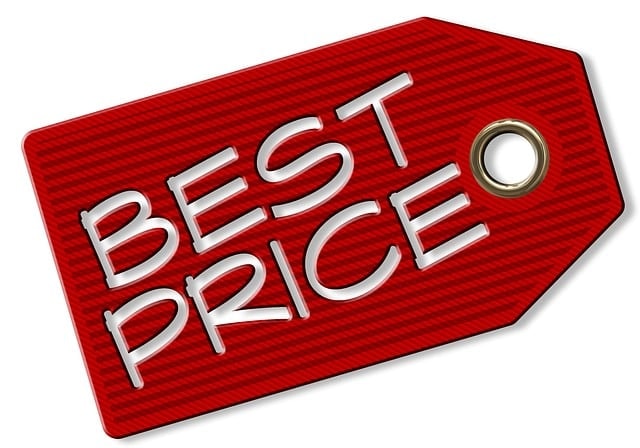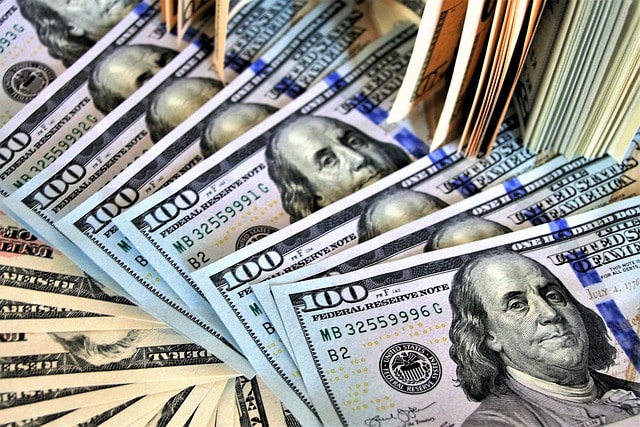What is the Price Elasticity of Demand?
Price elasticity of demand measures how much the quantity demanded of a good changes when its price changes. It helps businesses understand consumer behavior. For instance, if the price of a candy bar increases, will people buy less? This relationship is crucial for setting prices.
Understanding price elasticity is essential for businesses and economists. It shows how sensitive consumers are to price changes. If demand is elastic, small price changes lead to significant changes in the quantity demanded. Conversely, inelastic demand means price changes do not affect the quantity sold.
Types of Price Elasticity of Demand
Relatively elastic demand: Relatively elastic demand refers to a situation where a slight change in price leads to a proportionally more significant change in quantity demanded. In other words, consumers are highly responsive to price changes, causing demand to be elastic. This means that when prices increase, the quantity demanded decreases significantly, and vice versa.
Perfectly elastic demand: Perfectly elastic demand occurs when consumers are willing to buy any quantity of a good or service at a specific price but are not willing to pay any higher price. In this scenario, the demand curve is horizontal, indicating that even a slight price increase would lead to consumers buying nothing. This extreme form of elasticity demonstrates the consumer’s sensitivity to price changes.
Unit Elastic Demand: Unit elastic demand occurs when the percentage change in quantity demanded equals the percentage change in price. In other words, when the price of a product changes by a certain percentage, the quantity demanded changes by the same percentage in the opposite direction, resulting in total revenue remaining constant. This indicates that consumers are very responsive to price changes.
Relatively inelastic demand: Relatively inelastic demand occurs when a change in price leads to a proportionally smaller change in quantity demanded. This means that consumers are not very responsive to price changes, and as a result, the quantity demanded does not fluctuate significantly with price changes. Inelastic demand is often seen for essential goods or products with limited substitutes.
Perfectly inelastic demand: Perfectly inelastic demand occurs when the quantity demanded remains constant regardless of changes in price. This means that consumers are willing to pay any price for the good or service, indicating a complete lack of responsiveness to price fluctuations. In other words, the demand curve is a vertical line, indicating no change in quantity demanded even as prices vary.
Why is Price Elasticity of Demand important in small business?
Price elasticity of demand is crucial for small businesses as it helps them understand how price changes will impact the quantity of goods or services sold. By knowing the price elasticity of demand for their products, small businesses can make informed decisions about pricing strategies, promotional activities, and overall revenue management.
For example, if a small business has a product with inelastic demand, it can increase prices without significantly decreasing sales, leading to higher profits. On the other hand, if the demand for a product is elastic, lowering prices may result in a substantial increase in sales volume. Understanding price elasticity of demand allows small businesses to optimize their pricing strategies and maximize revenue in a competitive market environment.
What is the Price Elasticity of Demand Formula?
The price elasticity of demand formula measures how much demand changes when prices change. The basic formula is:
Price Elasticity of Demand = (% Change in Quantity Demanded) / (% Change in Price)
This formula helps businesses understand how sensitive customers are to price changes.
Price Elasticity of Demand Formula Example
In practice, an example of the price elasticity of demand formula can be seen when analyzing the demand for a specific product, say smartphones. If the price of smartphones increases by 10%, and as a result, the quantity demanded decreases by 20%, we can calculate the price elasticity of demand using the formula:
Price Elasticity of Demand = (% Change in Quantity Demanded) / (% Change in Price)
In this case, the price elasticity of demand would be:
Price Elasticity of Demand = (-20%) / (10%) = -2
This means that the demand for smartphones is relatively elastic, as a 1% increase in price leads to a 2% decrease in the quantity demanded.
How do I calculate the Price Elasticity of Demand?
First, determine the initial quantity demanded and price. Then, identify the new quantity demanded and price after a price change.
Next, calculate the percentage change in quantity demanded by using the formula:
% Change in Quantity Demanded = (New Quantity Demanded – Initial Quantity Demanded) / Initial Quantity Demanded * 100
Similarly, calculate the percentage change in price by using the formula:
% Change in Price = (New Price – Initial Price) / Initial Price * 100
Finally, plug these values into the Price Elasticity of Demand formula to find the elasticity.
Remember, if the result is greater than 1, demand is elastic; if it is less than 1, demand is inelastic; and if it is equal to 1, demand is unit elastic.
How can I apply the Price Elasticity of Demand in my Business?
Here are some crucial principles to consider when applying the price elasticity of demand to your business.
Understanding Customers
Businesses need to know how customers react to price changes. Price elasticity of demand helps in understanding this. For example, demand is elastic if a company raises prices and sales drop significantly. Conversely, demand is inelastic if sales stay steady despite a price increase. Knowing this guides pricing strategies.
Pricing Strategies
A sound pricing strategy considers price elasticity. Companies can choose different approaches based on their products. Raising prices for essential goods may not affect sales much. For luxury items, even small price increases can lead to fewer purchases. Adjusting prices carefully can maximize profits.
Real-World Example
Consider a coffee shop. If it raises the price of its popular drink by $1 and sales drop by 50%, the demand is elastic. The shop might decide to keep prices steady or offer promotions instead. This keeps customers happy and encourages repeat visits.
Service Improvement
Improving service can also impact demand elasticity. If customers feel they receive great value, they might tolerate higher prices. Businesses should focus on enhancing customer experience alongside their pricing strategies.
Monitoring Changes
Companies must monitor changes in demand regularly. This helps them adjust their pricing strategy as needed. Staying aware of customer preferences ensures that businesses remain competitive.
Frequently Asked Questions
Here are the most common questions about price elasticity of demand.
What makes goods Elastic or Inelastic?
The price elasticity of demand varies based on consumer response to price changes. Elastic goods, like televisions, experience a significant shift in demand with price fluctuations.
Inelastic goods, such as prescription medication or grocery staples like salt, see stable demand regardless of price increases. The availability of substitutes influences elasticity, with products having more alternatives being more elastic.
Essential items like electricity tend to be inelastic due to their necessity. The percentage of income spent on a product also impacts elasticity, with expensive items being more elastic.
Time can also affect elasticity as consumers may find alternatives over time. Understanding these factors is crucial for businesses to make informed pricing and supply decisions.
What are the limitations of the Price Elasticity of Demand?
Here are some limitations to consider when using the price elasticity of demand.
Certain Price Points: Price elasticity of demand can vary at specific price points. A product may be elastic at one price but inelastic at another. For example, a slight increase in the price of candy might lead to a significant drop in sales. However, if medicine prices rise, people might still buy it because they need it.
Competitors and Alternatives: The presence of competitors affects elasticity. If many alternatives exist, consumers can easily switch products. This means demand becomes more elastic. For instance, if soda prices rise, people might choose juice or water instead. The ability to find substitutes changes how sensitive buyers are to price changes.
Different Offerings: Different offerings can also create limitations. Products within the same category may have different elasticities. Luxury brands often have less elastic demand compared to budget brands. Consumers may not easily give up their favorite luxury items, even if prices rise.
Comprehensiveness and Examples: The comprehensiveness of elasticity measures varies too. It does not account for all factors affecting demand. For example, seasonal changes can impact sales. In summer months, ice cream sales spike, regardless of price changes. These examples show that many factors influence consumer behavior beyond just price.
Price Elasticity of Demand Pros & Cons
Pros:
- Helps businesses understand how price changes affect consumer demand.
- Provides insights into the sensitivity of consumers to price changes.
- Can assist in pricing strategies and revenue optimization.
Cons:
- Price elasticity of demand may vary across different products or markets.
- It relies on historical data and may not always accurately predict future demand.
- Calculating price elasticity can be complex and time-consuming.
What factors impact the Price Elasticity of Demand?
Multiple factors influence price elasticity of demand.
Availability of Substitutes
The availability of substitutes plays a significant role in price elasticity. If many similar products exist, demand becomes more elastic. For instance, if the price of one brand of cereal rises, people might easily switch to another brand. This change shows how sensitive consumers are to price changes.
Necessity vs. Luxury
Goods can be classified as necessities or luxuries. Necessities tend to have inelastic demand. People will buy them regardless of price changes. For example, insulin is essential for people with diabetes. A price increase does not significantly affect its demand. On the other hand, luxury items like sports cars have elastic demand. Buyers can delay their purchases when prices rise.
Time Period
The time period also influences elasticity. In the short term, consumers may not adjust their buying habits quickly. Over time, they find alternatives or change preferences. For example, if gas prices rise suddenly, people may keep driving their cars for a while. However, they might choose public transport or electric vehicles in the long run.
Consumer Preferences
Changes in consumer preferences also impact demand elasticity. Demand can become more elastic if a trend makes a product more desirable. For example, if healthy eating becomes popular, organic foods may see increased demand even at higher prices.
Can price elasticity change over time?
Yes, price elasticity can change due to various factors, such as consumer preferences, market conditions, and the availability of substitutes. Regularly assessing elasticity helps businesses stay competitive and responsive to market shifts.
What is the Price Elasticity of Supply?
Price elasticity of supply measures how responsive the quantity supplied of a good or service is to a change in its price. It is calculated as the percentage change in quantity supplied divided by the percentage change in price. A perfectly elastic supply curve would have a price elasticity of supply of infinity, meaning any price change would result in an infinite change in quantity supplied. On the other hand, a perfectly inelastic supply curve would have a price elasticity of supply of zero, indicating that the quantity supplied does not change in response to a change in price.
The relationship between the price elasticity of supply and the price elasticity of demand is crucial in understanding market dynamics. When both supply and demand are elastic, small price changes can lead to significant shifts in quantity traded. In contrast, when supply and demand are inelastic, changes in price have minimal effects on quantity. Understanding these concepts can help businesses and policymakers make informed decisions about pricing strategies, production levels, and market interventions.
What is the Price Elasticity of Demand – Final Thoughts
Understanding the concept of price elasticity of demand is crucial for businesses to make informed decisions about pricing strategies and revenue optimization. By analyzing how price changes affect consumer demand, companies can adapt their pricing strategies accordingly to maximize profits. It is essential for businesses to continuously monitor and assess the price elasticity of demand to stay competitive in the market.
Contact us if you have more questions about pricing strategies or to apply for a small business loan. Our alternative financing experts can help you find the best funding options for your business needs.





















